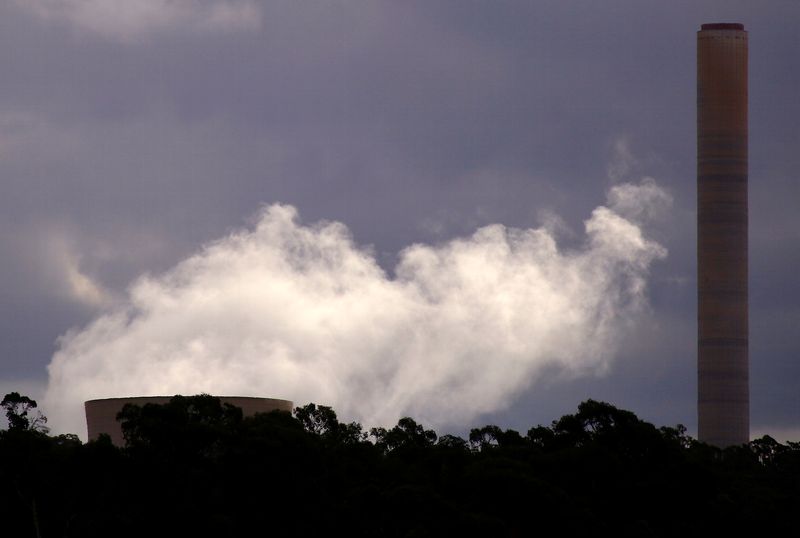Column-Australia’s nuclear power proponents have questions to answer: Russell
2024.06.20 00:56
By Clyde Russell
LAUNCESTON, Australia (Reuters) – Australia’s main opposition party wants a sensible debate about nuclear power as it commits to build seven plants to replace coal generation if it wins the next federal election.
The conservative Liberal Party and its junior regional partner National Party announced plans on Wednesday for five large-scale nuclear plants in the eastern Australian states of Queensland, New South Wales and Victoria, as well as small modular reactors for South Australia and Western Australia.
If there is to be a genuine debate on what form of generation is best to replace Australia’s ageing and increasingly unreliable fleet of coal generators, there are two main questions that need to be answered.
The first is the cost of the replacement generation and the second is whether it can be delivered quickly enough to not only replace coal plants, but also to meet Australia’s commitment to net-zero emissions by 2050.
The Liberal and National parties, together known as the Coalition, declined to provide any costings for the their plans, but Liberal leader Petter Dutton did acknowledge it would be expensive, while still claiming it would deliver cheaper power for Australians.
No credible analyst supports Dutton’s assertion, with estimates varying as to the cost of building nuclear generation, but all of them coming in well above the cost of solar and wind firmed by battery storage and pumped hydropower.
The government’s science agency, the CSIRO, estimated that new nuclear power would be twice as expensive as renewables backed by storage, and this was a best case scenario predicated on achieving economies of scale from a long-term and continuous building programme.
The Coalition said it would be able to have nuclear plants up and running between 2035 and 2037, assuming it started implementing its policy if it defeats the ruling Labor Party in a federal election due in the first half of 2025.
In theory it would be possible to build the seven gigawatts (GW) of nuclear plants on that time scale, but doing so would be an incredible achievement at odds with the recent experiences of other Western countries.
Nuclear plants are notorious for blowing out both on budget and time, with Britain’s under-construction Hinkley Point C one such example, where the cost has more than doubled and the start date pushed back at least seven years.
OBSTACLES ABOUND
The Coalition also did not elaborate on how it would overcome several political and social obstacles to nuclear power.
Currently nuclear generation is prohibited by federal law, meaning the Coalition would have to pass enabling legislation through both the lower chamber and the upper house Senate.
While it may win the election and control the lower house, it would take a massive victory for it to take control of the Senate.
This means Dutton as prime minister would have to negotiate with cross-bench senators, and given the majority of those are either from the Australian Greens or are progressive independents, it’s likely his nuclear plan would fail at the first hurdle.
There are also prohibitions on nuclear power in several states, and so far the leaders of New South Wales, Victoria and Queensland have rejected any nuclear plants.
Building a nuclear industry from scratch would also require importing a skilled workforce of nuclear engineers and other experts, something that seems at odds with the Coalition’s plans to reduce migration and its increasing anti-immigrant rhetoric.
Winning a social licence from the communities where the nuclear plants are planned to be located may also present challenges, even if the facilities bring jobs to replace those lost when the coal-fired generators close.
There is also the question of scale, with the Coalition planning on 7 GW of nuclear plants, which is only a third of Australia’s current coal-fired capacity of about 22 GW.
This means that nuclear won’t come close to replacing coal, which in turn means that renewables and storage will be needed as well, or there will be more reliance on costly .
The question of funding nuclear is also unresolved, especially since no Australian utility has shown any interest in going nuclear.
The Coalition has implied that a government-owned corporation will be set up and presumably funded by taxpayers, a position that seems to contradict the underlying philosophy of at least the Liberal part of the Coalition that governments should play a limited role in the economy.
Initial reaction to the Coalition’s nuclear plans has been overwhelmingly negative, with one of the few supportive voices coming from the Minerals Council of Australia, a lobby group that includes coal miners.
While the council doesn’t say it in their media release, part of their support for nuclear is because they recognise that going down that path most likely means coal remains in the generation mix for a much longer period than currently expected.
Overall, it’s tempting to dismiss the Coalition’s nuclear plans as an expensive fantasy, especially in a country so ideally suited to develop solar and wind.

However, the real damage from the nuclear proposal is likely that the energy debate in Australia will descend into a partisan political slanging match, with nuclear and fossil fuels being championed by the right-wing and renewables and storage by their left opponents.
The opinions expressed here are those of the author, a columnist for Reuters.







